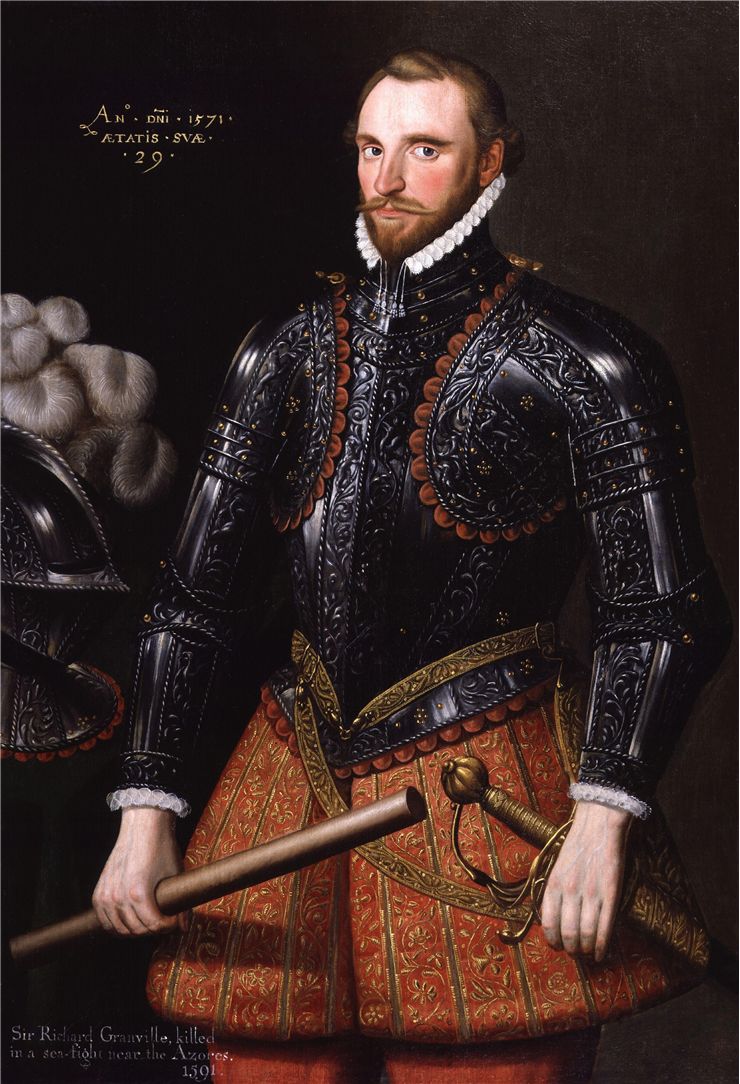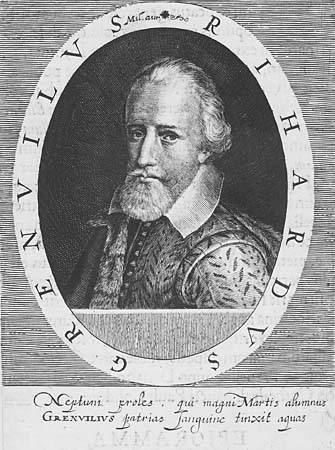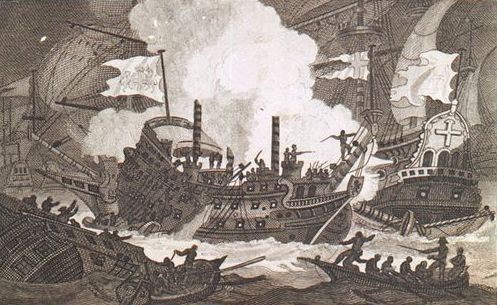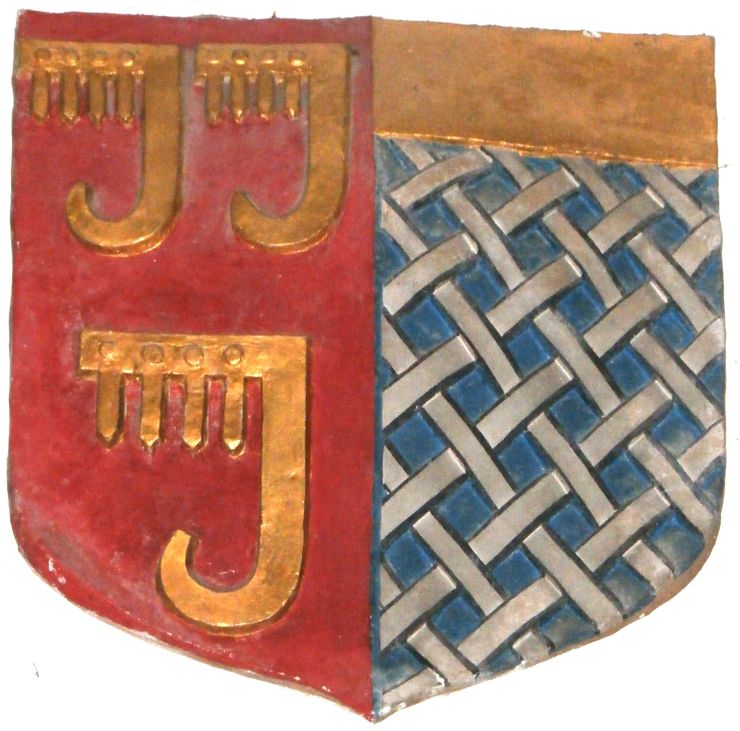Sir Richard Grenville Biography
Sir Richard Grenville (1542 - 1591) was an English sea captain and explorer that is today best remembered for his involvement in colonizing New World and several famous fights against Spanish forces. As a cousin of famous explorers and Privateers Sir Walter Raleigh and Sir Francis Drake, Richard Grenville managed to forge his own fame by taking his stand in the Battle of Flores, where he fought and died against overwhelming odds. To this day, he is immortalized in the poem "The Revenge", written by the Tennyson.
Little is known about the early life of Richard Grenville, except that he was born 5 June 1542 at Buckland Abbey in Devon, England. 22 years later he married Mary St. Leger, fought a short campaign against the Turks in Hungary and entered the political life by taking several posts within English and Irish governments. By 1577, Richard Grenville received his knighthood and position of sheriff of Cornwall, but he wanted excitement on the sea and joined the fleet of his cousin Sir Walter Raleigh and begun helping him in his exploration of North America. In 1584, he commanded the fleet of several Raleigh's ships, and one year later he took four ships to the shores of Virginia where they made permanent settler colony. On his return to England, he even managed to capture one Spanish ship and ransack the Azores, for which he received the position of Vice-Admiral of the Navy.
By 1588, war between Spanish and England reached a high point when an armada of 132 Spanish ships started their attack on the badly defended English fleet. During that summer, Sir Walter Raleigh & Sir Richard Grenville were both responsible for the coordination of the land-based defense in Devon and Cornwall, but the eventual destruction of Spanish Armada at the sea prevented their troops from seeing any action.
The last war campaign of Richard Grenville came in 1591 when he and Lord Thomas Howard were sent by English crown to sail to the Azores in search of Spanish treasure fleet. During their journey, they encountered vast Spanish war armada which quickly surrounded them and forced them to fight. Sir Richard commanded his flagship galleon "Revenge" (often considered to be one of the best-made warships of its time) with incredible tactics, fighting alone against incredible force of 53 Spanish ships and causing severe damage to the 15 enemy galleons. The power of his command over his crew was so great that they continued to fight until the very end of their resources, until the last barrel of powder and last working piece of weapon. After 12 hours of battle, Sir Richard Grenville was adamant to destroy his ship in defiance, his crew surrendered against his wishes, and everyone became a prisoner of war.
Several days later, on the September 10th 1591, Sir Richard Grenville died from the wounds that he sustained in the battle, cursing the cowardice of his crew until his last breath. Spaniards heavy losses sustained during the battle against Sir Richard had heavily multiplied soon after, when the very strong week long storm destroyed 15 of their ships, including the captured "Revenge".
| Name | Richard Grenville |
| Born | 15 June 1542 |
| Place of Birth | Bideford, Devon, England |
| Died | 10 September 1591 |
| Place of Death | off Flores, Azores Islands |
| Category (Occupation/Profession) | Soldier, Armed Merchant Fleet Owner, Privateer, Colonizer, explorer |
| Nationality | English |
| Religion | Christian |
| Known For | Fighting heroically against overwhelming odds, and refusing to surrender his ship to the far more numerous Spanish |
| Spouse(s) | Mary St Leger |
| Children | Bernard Grenville |
| Parent(s) | Roger Grenville, Thomasine Cole |
| Relative(s) | Walter Raleigh, Humphrey Gilbert |
| Rank (Title) | Admiral |
| Allegiance | Kingdom of England |
| Service | Royal Navy |
| Battles/Wars | Second Desmond Rebellion, Anglo–Spanish War (1585), Battle of Gravelines, Battle of Flores (1591) |
| Ships | Revenge |



